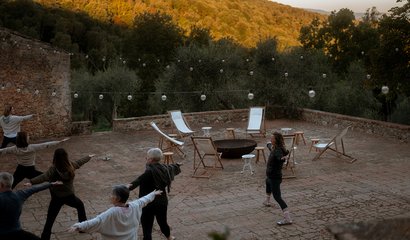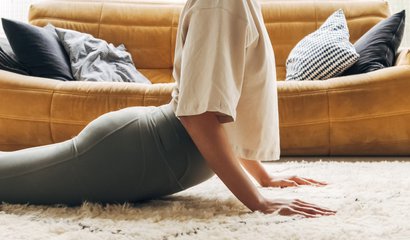Nov. 29, 2017
Sustainable Yoga Series: Upward Dog
On the surface, Upward Facing Dog looks like a backbend. When asked, many people would reply, they practice upward dog to help open tight shoulders, hips and quads. That may be true to a point but although it can give the front of the body a nice stretch feeling, it also can really easily compress the vertebrae in the lumbar spine and cervical spine while creating instability in the shoulders.
When we are looking at practicing yoga in a sustainable manner, one of the questions we need to ask when examining postures is, why? What am I looking to achieve from this pose?
On the surface, Upward Facing Dog looks like a backbend. When asked, many people would reply, they practice upward dog to help open tight shoulders, hips and quads. That may be true to a point but although it can give the front of the body a nice stretch feeling, it also can really easily compress the vertebrae in the lumbar spine and cervical spine while creating instability in the shoulders.
There are a few different ways that you can tweak Upward Facing Dog to make it sustainable for your body. Let's look at one option.
Your body is made to move (and should) move in all sorts of different ways. But we are also generally a population of people who sit a lot; which means most people are very tight in the front of the body, specifically hip flexors and chest. It would then be a logical conclusion that we do a lot of backbending to counter the tightness at the front. But backbending isn't always doing what we think it's doing. What can end up happening is that we move from our more mobile parts at the expense of the less mobile parts.
In Upward Facing Dog and other backbends, the more mobile part in most people seems to be some hyper-mobility somewhere in the lumbar spine, often T12 and L1. Your body is smart, when you ask it to do something, it goes for the path of least resistance. Here in Upward Dog, if you have tight hips and quads, the path of least resistance is to do most of the moving from that hyper-mobile spot. And doing so, leads to the lower back compression and pain that is a common complaint in this pose.
Updating Upward Facing Dog
You can see in the picture above the pink dots highlighting some of the common problem areas of the pose. Low back, neck and elbows.
How to:
Line your shoulders over your wrists, with your hands shoulder width apart.
*People with hyper-mobile elbows need to keep a soft bend in the elbow to protect the elbow joint and as a result, instead of hanging the weight of your body in the elbow, you will properly engage and use the muscles in the arms and shoulders.
Traditional Cue: Lift the Chest and squeeze shoulder blades together. By lifting the chest and squeezing the shoulder blades together, we create instability in the shoulder girdle.
Updated Cue: Try to keep your shoulder blades wide and your elbows ever so slightly bent.
Traditional Cue: Reach your head back and look up to the ceiling.
Updated Cue: Let the back of the neck stay long. Less compression of your cervical vertebrae this way.
Traditional Cue: Pull your tailbone down and lift your chest. This cue is a big reason why we get the compression in the lumbar spine. Even though tucking the tailbone can give the feeling of spaciousness in the low back, you are compromising strength and stability through the core when you do so.
Updated Cue: Instead of dropping your hips and reaching your chest up to the ceiling, bring your low ribs down and up into your body. This will end up lifting your hips higher off the floor but as you can see in the picture, now you have structural stability. Look at those lovely lines through your spine. Your core is working and it is easier to keep your shoulder blades wide so that you have proper support in the shoulder girdle.
With these updated cues, the pose now looks and feels more like a plank pose but the discs in the lower back, along with your shoulders and neck are so much happier! You will still get some extension and stretch to the front line of your body. Yet if you are looking for the benefits of backbending, such as hip and quadricep opening, thoracic spine extension, then there are a lot of other ways to achieve space in those areas then Upward Facing Dog.
If you enjoy a vinyasa style practice that involves a lot of Upward Dogs, then refine the pose with the above points and you will be more strong and mobile in your body over time and your disks and joints will be thanking you.
Curious about what a sustainable yoga practice looks like?
You'll get to explore updated versions of traditional yoga poses, along with functional movement and a whole lot of love in our online yoga studio




